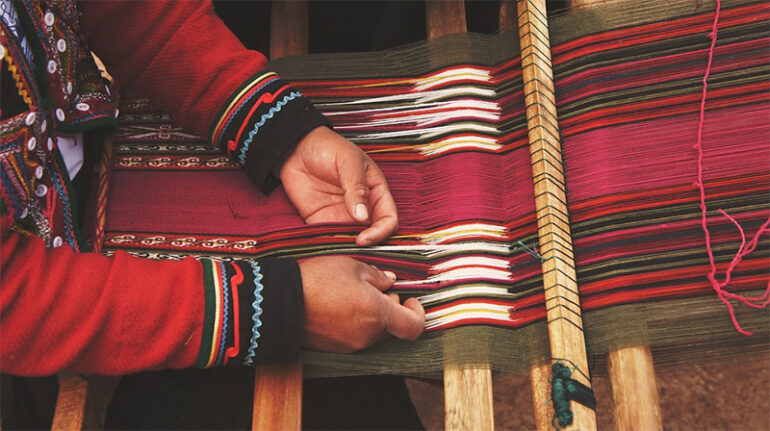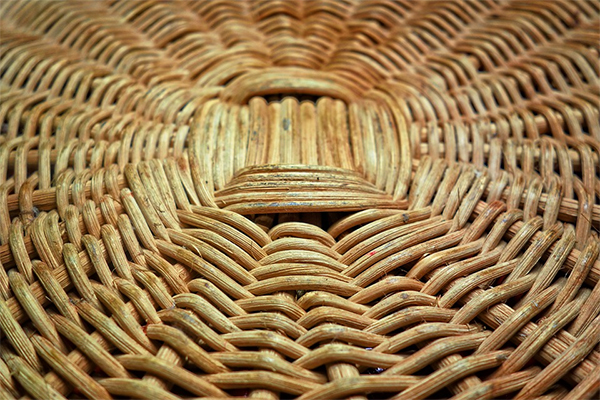Most of us only associate weaving as a form of art that has no space in this contemporary world because of how slow it takes to produce products using this method. But weaving is more than this, it is the process of intertwining materials together to create a pattern that would come together to create beautiful designs. And depending on the materials being used, weaving can create an array of items such as clothing, bags, furniture, etc.
Clothing
We use clothing daily yet how often is it that we encounter woven clothing? Weavers create long lengths of woven fabrics by arranging threads vertically on a loom and then weaving horizontal threads together so that they can create fabrics displaying intricate and unique designs. These fabrics are used to create articles of clothing that are often worn for formal events and occasions. Although a long and tedious process, it can create clothing that help support indigenous tribes and their families. Moreover, the use of woven clothes can help preserve this tradition and the art form of weaving.
Furniture
Furniture is part of our daily lives. We connotate furniture with resting and relaxation. Although the process of creating these pieces is anything but restful and relaxing. And for weaving together furniture, it can be an even more long and tedious process. Weaving a piece of furniture would require getting the shape right and making sure that there are no loose ends or grains of wood overhanging.
Sustainability of weaving
With the looming threat of global warming it is safe to say that we need to find different ways to use materials in a sustainable manner. And it is safe to say that weaving promotes sustainability. Weaving makes use of materials such as natural textile and wood. The use of these materials is not harmful to the environment making them a viable way to help promote sustainability.
Indigenous People
In the Philippines, there are numerous communities that have a type of weave that is exclusive to their community. Some examples include the Kalinga weave from the Kalinga Province, Mabal Tabih from South Cotabato, Ramit from Mindoro, and many more. Weaving is an art form that is slowly getting lost in this contemporary world. But through the promotion of weaving, not only will the tradition and art form of weaving be preserved but it will also serve to employ these Indigenous People. This simple act of supporting the livelihood of these indigenous people can be the lifeline to ensure that their society, culture, and way of life can endure the pervasive influence of modernism.
Overall, weaving is a process that may be time consuming, but it also yields designs that are unique and exclusive to this process. It can create clothes, bags, furniture, and much more than that making it a versatile form of art that can do much more. When buying products that have been hand woven you should also keep in mind that you are able to help keep the tradition and art of weaving into the next generation. Suffice to say, you would also be able to help Indigenous tribes and their families get by their day to day lives by promoting and sustaining their employment.
Photo Attribution
1st and featured image by https://pixabay.com/photos/craftsman-loom-craftsmanship-hands-1839920/
2nd image by https://pixabay.com/photos/reed-basket-basket-weaving-3166698/

